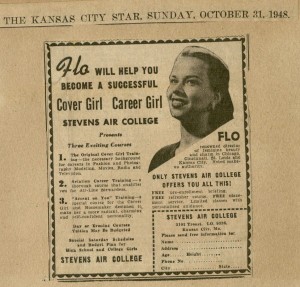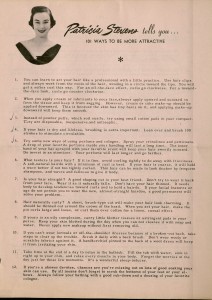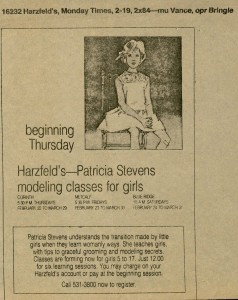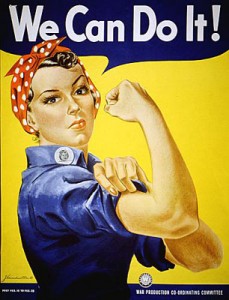Patricia Stevens started her career as a professional model in Chicago in 1945. The late Florence Czarnecki Stevens became “Patricia Stevens” only after her 1946 marriage to a young Chicago entrepreneur named James Stevens. Before he met Flo, he had already named his training school, a business designed to help women navigate the post-war work world.
An early subscriber to Stevens’ vision was Howard Hughes. The millionaire industrialist and Trans World Airlines chairman was Jim Stevens’ first big client. Hughes hired the new company to train TWA stewardesses when the airline was still b ased in Kansas City. In 1948 every airline attendant hired by TWA was trained by Patricia Stevens with guaranteed placement by TWA; that division was called Stevens Air College. They even had half an airplane in their building to help in their training. The Patricia Stevens Career College & Model Agency came later. Jim’s sister, Bernadine, legally changed her name to Patricia; but Flo, the woman who everyone assumed was the real Patricia Stevens, never did. In the late 1950s the Patricia Stevens School System chose Kansas City as a home base owing to the fact that the Kansas City Market was the most difficult in the franchised chain of 55 schools to operate. The chain of modeling schools and talent agencies bearing her adopted name extended across the country
ased in Kansas City. In 1948 every airline attendant hired by TWA was trained by Patricia Stevens with guaranteed placement by TWA; that division was called Stevens Air College. They even had half an airplane in their building to help in their training. The Patricia Stevens Career College & Model Agency came later. Jim’s sister, Bernadine, legally changed her name to Patricia; but Flo, the woman who everyone assumed was the real Patricia Stevens, never did. In the late 1950s the Patricia Stevens School System chose Kansas City as a home base owing to the fact that the Kansas City Market was the most difficult in the franchised chain of 55 schools to operate. The chain of modeling schools and talent agencies bearing her adopted name extended across the country
Flo’s three daughters – Patricia Jr., the eldest; Melissa, the second born; and Sheila the youngest – were groomed to be stylish, poised and popular. They weren’t just the daughters of a familiar local brand; they were walking advertisements for the family business. The oldest daughter, Patricia, was voted Miss Teenage Kansas City in 1968. The youngest, Sheila, dressed up as the Easter Bunny every spring for the Easter parade, which Flo Stevens started on the Country Club Plaza in 1960. This popular tradition continued for over three decades, until its swan song in 1995. 
The Stevens collection shines a reflective light into the past and the antiquated mind set of what a woman’s role was to be in contemporary society. It was Patricia Stevens charge to indoctrinate young women to the importance of personal appearance and proper deportment. Informational handouts and class curriculum dictate the need to begin a regiment, beginning as a young child, establishing wardrobe colors which will best suit personality and social acceptance. Levels of training included modeling courses, fashion merchandising, charm classes and business classes. Modeling students were groomed to participate in fashion shows and other such events as well as compete in local and national beauty competitions. Debbie Bryant, Miss America 1966, was a graduate of the Patricia Stevens School. 
The Patricia Stevens Collection is a wake-up call to those who came of age in an era when women held a social status unique to those of today’s standards. It is enlightening to say the least, with elements of humor, shock and, at times, disbelief. Confidential correspondence speaks to a level of hero worship and even psychological dependence on the Matriarch of this organization, Flo Stevens who, according to her students was either embraced or rebuked. There would be no middle ground. It is rich in content for a researcher interested in the study of women’s historical cultural issues. It is also the story of a family – the Stevens family, a single mother and her three young daughters – who lived and breathed for what they felt was a noble cause; and, for the most part, who felt their students to be part of their extended family.
Teresa Wilson Gipson, Library Information Specialist II, LaBudde Special Collections
Some Excerpts from:
Ferruzza, Charles. “Melissa Stevens – heir to the Patricia Stevens Modeling School – refuses to be forgotten.” Pitch Weekly. August 9-15, 2012.

